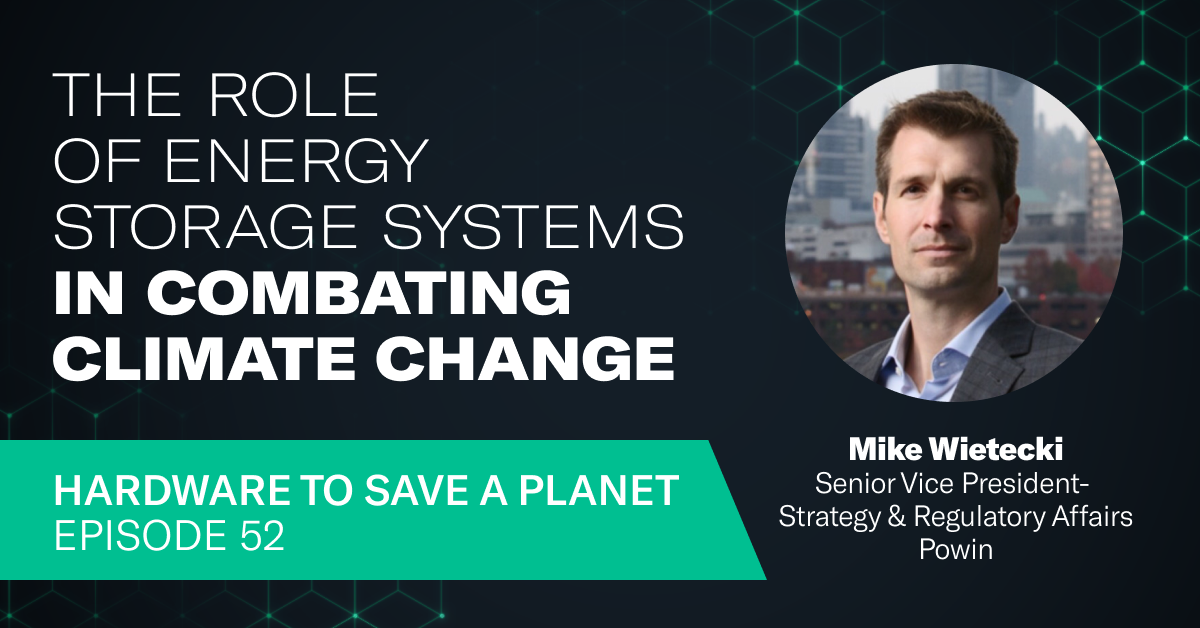As the world continues to grapple with climate change challenges and the need for sustainable energy solutions, energy storage is becoming increasingly important. Energy storage plays a crucial role in transitioning to a clean energy future by enabling the efficient and reliable integration of renewable energy sources into the grid.
The exponential growth of renewable energy sources like solar and wind power has been instrumental in our transition to a clean energy future. However, the intermittent nature of these sources poses a significant challenge. Unlike fossil fuel-based power plants that can generate electricity consistently, renewable energy sources are subject to the availability of sunlight and wind. Energy storage steps in as a solution, storing surplus energy during peak generation and releasing it into the grid during periods of high demand, effectively helping to decarbonize the grid.
Listen to a special episode of Hardware to Save a Planet with Mike Wietecki, SVP of Strategy and Regulatory Affairs at Powin, hosted by Dylan Garrett, to learn more about Powin’s journey and our effort to decarbonize the grid with lithium iron-based energy storage systems. Seeing how far energy storage has come in the ten years is an incredible example of how quickly we can change industries.
Energy storage is a really exciting sector of the power industry right now, with huge growth projections. We’re projected to double capacity in the US this year by adding about 15 gigawatts of storage in just one year. It’s also a really important topic for climate change. As we transition the grid to renewables, energy storage will help us level out the intermittency of wind and solar. It will also help us match supply to the variability on the demand side, which is only getting worse as we electrify end uses like heat pumps in our homes.
How Energy Storage Helps Fight Climate Change
The grid’s electrification requires phasing out carbon-intensive generation and embracing renewables despite their intermittent nature. As demand surges—it’s expected to double or triple by 2050—efforts are underway to expand grid capacity. Storage has emerged as a critical component, evolving from science fiction to large-scale deployment.
Initially focused on shorter durations, such as covering peak demand, the market is now shifting towards longer-duration projects. Despite challenges like mining and production constraints, the industry is poised for growth, with trillions of dollars of investment needed. Lessons learned from lithium-ion deployment help address the development challenges of longer-duration energy storage, underscoring the collaborative effort needed to address climate challenges.
Challenges and Opportunities in Energy Storage
While energy storage technologies have made significant progress in recent years, there are still challenges to overcome. Some of these challenges include high costs, limited scalability, and the need for further technological advancements.
However, with continued research and development, it is expected that these challenges will be addressed, leading to more cost-effective and scalable energy storage solutions. The future outlook for energy storage is promising. The global energy storage market is projected to grow rapidly in the coming years, driven by increasing renewable energy deployment and supportive government policies.
Advancements in storage technologies, such as next-generation batteries and innovative storage concepts, are expected to further enhance energy storage’s role in the transition to a clean energy future.
Listen to the full Hardware to Save a Planet episode with the links below:
Apple Podcasts: https://bit.ly/3yd3mti
Spotify: https://bit.ly/4b8B4Pn
For the latest updates and news please visit our website or connect with us on LinkedIn.

